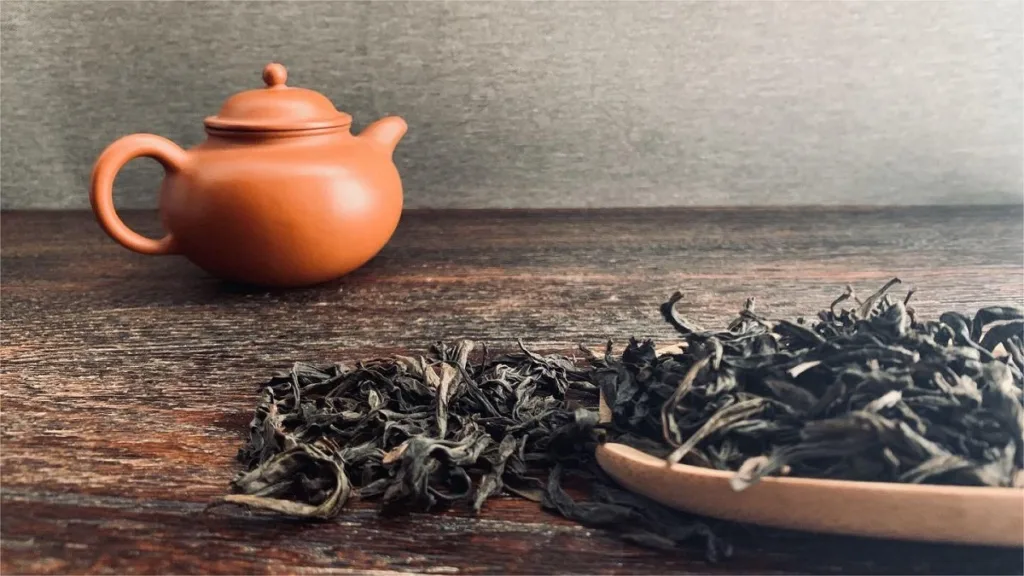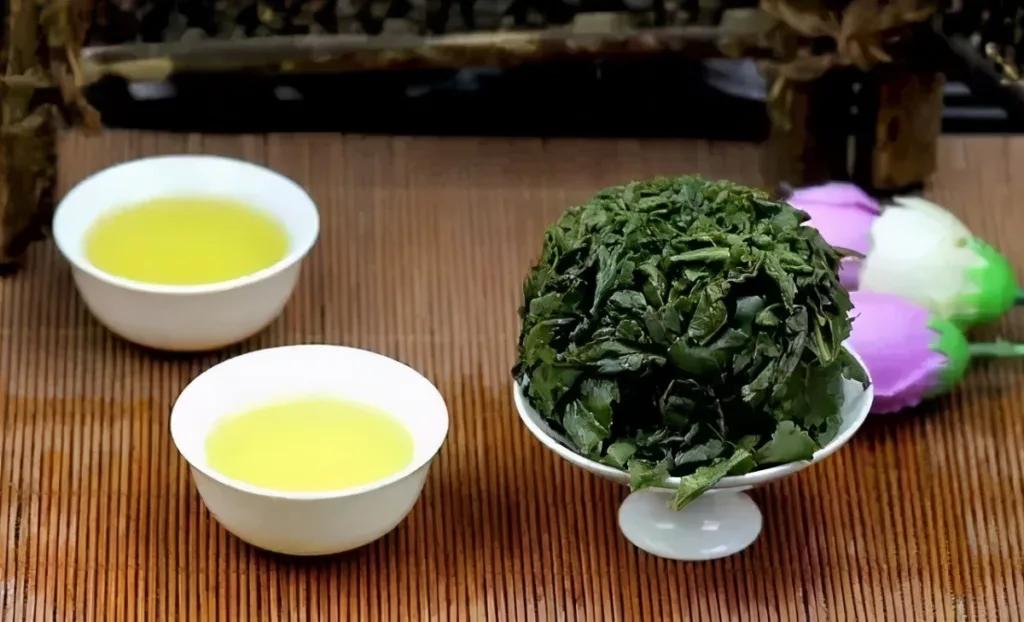Da Hong Pao, or Red Robe Tea (大红袍), is a renowned and highly esteemed variety of oolong tea originating from the majestic Wuyi Mountains in Fujian, China. Celebrated for its exceptional quality and distinctive flavor profile, Da Hong Pao boasts a tightly twisted appearance with vibrant green-brown hues, and when brewed, it transforms into a bright orange-gold liquor with leaves displaying a mesmerizing interplay of red and green. What sets this tea apart is its luxuriant orchid-like aroma, which remains pronounced even after multiple infusions, making Da Hong Pao a true masterpiece among teas.
History and Legend
Da Hong Pao’s history is steeped in legend, adding to its allure and prestige. The tale dates back to the year 1385 during the Ming dynasty’s Hongwu period when a scholar named Ding Xian was en route to the imperial examination in the capital city. On his journey through the Wuyi Mountains, he fell gravely ill, suffering from unbearable abdominal pain. As luck would have it, he encountered a monk at the Tianxin Yongle Zen Temple. This compassionate monk brewed a tea from his treasured tea leaves and offered it to Ding Xian. Miraculously, the tea alleviated his suffering, and he was able to continue his journey, eventually achieving the highest honors in the imperial examination.
Grateful for the monk’s assistance, Ding Xian returned to express his gratitude. He inquired about the source of the tea leaves and learned that it came from a cluster of tea bushes. He draped his red robe around them in a gesture of thanks. It was from this moment that the tea received its legendary moniker “Da Hong Pao,” which translates to “Big Red Robe.”
Upon Ding Xian’s triumph and return to the capital, a surprising twist of fate occurred. The emperor’s beloved queen fell seriously ill, and despite the efforts of countless physicians, her condition only worsened. It was at this moment that Ding Xian remembered the miraculous tea. He presented the jar of Da Hong Pao leaves to the ailing queen. As she consumed this remarkable brew, her health gradually improved, much to the delight of the emperor.
In recognition of the tea’s remarkable healing properties, the emperor bestowed upon Ding Xian a red robe and instructed him to return to the Wuyi Mountains. There, he was to hang the robe on the tea bushes in gratitude for their assistance in healing the queen. Additionally, the emperor dispatched royal guards to protect and oversee the tea bushes, ensuring that all Da Hong Pao leaves would be presented as tribute and no longer hidden.
From that point on, Da Hong Pao became an exclusive tribute tea for the royal court, solidifying its prestigious status. Word of the tea’s exceptional qualities spread far and wide, making it one of the most revered and sought-after teas in the world.
Brewing Method
To unlock the full splendor of Da Hong Pao, a specific brewing method is essential:
Tea Quantity: The amount of tea leaves used depends on the size of your tea vessel, typically around two-thirds of the vessel’s volume. For those who prefer a milder flavor, you can reduce it to half the volume of your container.
Water Volume: The water should be measured based on the quantity of Da Hong Pao tea used, generally around 20-25ml of water for every gram of tea.
Water Temperature: Da Hong Pao falls under the category of semi-fermented oolong tea. It requires water with a temperature of at least 98 degrees Celsius, especially for the first infusion. Using water with a lower temperature can compromise the tea’s flavor and aroma, resulting in a lackluster brew.
Steeping Time: For the second infusion, steep the tea for approximately 5-10 seconds, gradually increasing the steeping time by 5-10 seconds with each subsequent infusion. Adjust the steeping time according to your personal preference. High-quality Da Hong Pao can be steeped more than eight times, with the flavor remaining vivid and delightful. The more you steep it, the sweeter and clearer the tea becomes.
Health Benefits
Da Hong Pao not only delights the senses but also offers a range of health benefits:
Stimulation: The caffeine in tea stimulates the central nervous system, enhancing alertness, cognitive function, alleviating fatigue, and increasing productivity.
Cardiovascular and Muscle Relaxation: Caffeine exhibits cardiovascular benefits and muscle relaxation properties, helping to alleviate bronchial spasms, promote blood circulation, and act as a supportive treatment for conditions such as bronchial asthma, coughs, and heart attacks.
Arteriosclerosis Prevention: Compounds like tea polyphenols and vitamin C found in tea possess blood-thinning and clot-preventing properties, which can contribute to a lower incidence of high blood pressure and coronary artery disease.
Weight Management: Da Hong Pao contains various compounds like caffeine, myo-inositol, folic acid, pantothenic acid, and aromatic substances that regulate fat metabolism. Oolong teas, in particular, have a notable effect on protein and fat decomposition. Tea polyphenols and vitamin C help reduce cholesterol and lipid levels, contributing to weight management.
Anti-Cancer Properties: Certain flavonoids found in tea are reported to have varying degrees of in vitro anticancer effects. Compounds like muscimol, anthocyanins, and catechins have been studied for their potential role in cancer prevention.
Digestive Aid: Caffeine in tea increases gastric juice secretion, promoting digestion and enhancing the breakdown of fats.



